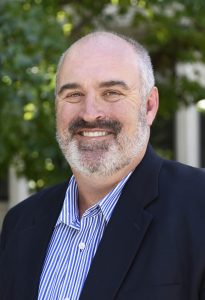Understanding the inherent human bias in the world’s energy systems is key to securing a just transition, according to civil engineer Neil Greet FIEAust CPEng EngExec.
The International Energy Agency (IEA) defines energy security as the uninterrupted availability of energy sources at an affordable price. It remains a sufficient definition for the internal energy system, but security is a curious notion that extends far beyond one system, even for the global energy behemoth.

The recent Defence Strategic Review confirmed that the protection of sea lines of communication which export and import energy are an essential element of the defence of Australia. But all notions of security have human security at the core.
In our distilled professional world, our definitions and centres of excellence sometimes miss the notion that it is us – the humans – who are at the heart of any need for security. We all have a right to feel safe and respected.
Thus, the central element of energy security is people with all their individual and collective needs that drive security. Our energy system benefits society rather than enslaving us to engineering and economic efficiency.
Framing energy security in the wider context of security allows us to improve our understanding of a just energy transition.
What is justice?
Many of us perceive justice to be the realm of lawyers and courts and accept that a judge presides over our justice system. It’s not something for engineers to worry about, other than as a big stick to ensure our behaviour stays within expected norms professionally and personally.
However, justice has many faces with the notions of climate justice and the just energy transition now in consideration. This is not quite the traditional purvey of justice, but perhaps critical for engineers to understand and embrace. As engineers, we will be asked to innovate and deliver solutions that achieve just outcomes in the energy transition.
Mechanical engineer Michelle Tan shares tips for advancing your career, such as the importance of planning and embracing the hustle.
Some of the characteristics of a just transition are maintenance of social cohesion, environmental sustainability,and human prosperity. All these characteristics are essential for a future energy system which embraces human security.
The altruistic aim may be to “leave no one behind”, but even with the best of intent this is not always possible or desired. The desired situation is to mitigate conflicts through sound policy, planning and adaptive governance measures.
Our role is to facilitate systems that reflect our best collective interests and avoid narrow stovepipes of personal interest that will fuel insecurity.
Justice for whom?
The engineer’s world is full of techniques that facilitate solutions for communities at the smallest and largest scale. We understand value and purpose, but even with this deep knowledge the difficult question of who derives benefits, and who gets caught by unintended and unforeseen circumstances, remains.
Here we look at the words of Charles Dickens in the novel ‘Martin Chuzzlewit’: “Charity begins at home, and justice begins next door.”
The main theme of the novel revolves around the Chuzzlewit family, using satire to depict the selfishness of characters in the boom times of London in the 1840s.
In this quotation, the corrupt and selfish Mr Tigg uses an existing English phrase – “charity begins at home” – suggesting to Chuzzlewit that it is acceptable to look after yourself before others, but in adding the second part – “and justice begins next door” – implies the law can be delivered with full force to others.
For Tigg, it is okay to be selfish and avoid consequences but also be fully within one’s rights to expect others to comply with the same laws.
How many Tiggs will cry about the effect of the energy transition system on them while also expecting others to carry a greater burden? Tigg may indeed be very wealthy and powerful. How do we distinguish the likes of Tigg from those with legitimate fears for the future and their potential loss?
This type of judgement requires deep consultation with all stakeholders and cannot be left to the market forces alone.
If we don’t understand the inherent human bias of our energy system and the need for nuanced judgements, then AI will surely implement bias in our future energy system with less understanding and compassion.
Collective challenge
A just energy transition may not be possible for all. Nonetheless, we must strive for a transition that minimises harm yet provides energy security for the greater good.
The impact of engineering solutions in the redesign of society with the energy transition cannot be underestimated. Ideology, bias, optimism and hope will all be elements of the social dialogue, but failing to keep justice and human security front-of-mind will lead to a flawed and inequitable transition.
This is our collective and individual leadership challenge.
Neil Greet FIEAust CPEng EngExec is Deputy Chair of the Engineers Australia College of Leadership and Management.
Solving problems for humanity’s benefit is engineers’ bread and butter. The upcoming Climate Smart Engineering Conference 2024 (CSE24) brings together some of the profession’s best thought leaders to navigate the clean energy transition.
